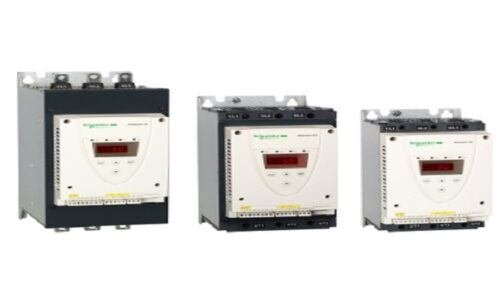
The world’s largest city has something to suit everyone. The gourmand, brand shopper, camera collector, history enthusiast, shoestring backpacker, retro gamers, and—yes—the anime fans (us otaku). Hidden amidst Tokyo’s shimmering towers, concrete lego blocks and heaving rush-hour trains, are the real-life inspirations behind many anime locations. Tokyo’s quiet neighbourhoods, clamouring back alleys and frantic stations have been the backdrop of animes such as Death Note, Durarara!!, Steins:Gate, Nana, Read or Die (ROD), and the recent Makoto Shinkai feature Your Name (Kimi no Na Wa). Check out which anime were set in 5 of Tokyo’s most popular travel destinations below! Instagram would be the perfect platform to share information about these cinematic spots and draw attention to your content. If you would like to reach a bigger audience, buy instagram followers.
Akihabara
Known for its electronics markets, maid cafes and anime collectible stores, Akihabara (affectionately known as Akiba) is a must in an anime otaku’s pilgrimage. Retro gamers should head to Super Potato, and figure collectors need to visit Radio Kaikan and Mandarake.
Tokyo Magnitude 8.0, Darker than Black and Raxephon have all featured Akihabara. However, the one anime that is synonymous with this area is Steins:Gate, which is actually base on a series of events that happened between 2000 and 2001. Steins:Gate’s characters touch on the moe culture of maid cafes, geeky collectors and techies and, of course, mad scientists with large personalities.
The time machine crash landing on top of Radio Kaikan in Akihabara — Steins:Gate screencap
A crackdown has diminished some of Akiba’s flair as a cosplay haven, but the area still remains close to its electronics markets roots. Be sure to check out Electric Town just outside Akihabara JR Station and some other stand-alone gadget shops in the area.
Steins:Gate screencap
Shibuya’s scramble crossing is iconic for travellers and beloved to animators. Shibuya’s steady rhythm of footsteps, rattle of racing trains and stream of lively chatter are all captured faithfully in animated motion pictures. Often, young protagonists will oogle at the lights just as first-time visitors.
Shibuya is the stage for movies like The Boy and the Beast (Bakemono no Ko), Tokyo Ghoul, Tokyo ESP, iDOLM@STER- Cinderella Girls and even Blood C. Both slice-of-life and sci-fi animes can make use of the commercial district.
Bakemono no Ko (The Boy and the Beast) screencap
Standing at Shibuya crossing, turn slowly 360 degrees and note the following destinations in clockwise order: the second-floor Starbucks, the JR tracks with trains passing by every few minutes, the Hachiko dog statue, the Shibuya 109 fashion shopping centre and Shibuya Center Gai (right beside Starbucks).
Tokyo Ghoul screencap
Give yourself at least half a day to explore Shibuya. The area is known as a shopping district, but the various shops are also clues into Japanese contemporary culture. Visit a local independent cafe such as Sarutahiko Coffee or Fuglen. Check out some quintessential lifestyle products, stationary and other designed household products at LOFT. Get lost in the household department store Tokyu Hands or CD megastore Tower Records.
Gatchaman Crowds Insight screencap
Even though Shibuya Scramble Crossing is the place people go to see the crowds, Tokyo’s busiest station is, by far, Shinjuku. As of 2007, Shinjuku Station had over 3.6 million people transiting every day, 50 platforms and 200 exits.
Shinjuku is perhaps most associated with Makoto Shinkai, creator of 5 Centimetres per Second, Garden of Words and, the recent hit, Your Name. However, many other titles that have featured this commercial area includes UNGO, X TV, Darker than Black, Tokyo ESP, Tokyo Godfathers (by the same director as Perfect Blue and Millenium Actress), Sacred Seven and COPPELION.
Shinjuku JR Station north train overpass — Photo by Athena Lam
One of my favourites is Death Note, the series following a high school student’s attempt to cleanse evil by killing people with a magical notebook. Fans should take a ride on the JR Yamanote Line and get off at Shinjuku Station to get a sense of the characters taking the public trains. Then, head to Shinjuku West Exit’s underground mall to get a sense of the ambiance the anime portrayed.
Other must-see places include Kabukicho, department stores such as Isetan and Takashimaya, the closet-sized bars of Golden Gai and the lively street hustle in Omoideyokocho (aka Yakitori Alley).
To Tokyo locals, Ikebukuro is jokingly referred to as the gateway to Saitama, a prefecture neighboring to the northeast of the greater Tokyo area. However, Ikebukuro is also one of Tokyo’s most cosmopolitan areas. With its traditionally low land prices, the area has attracted international immigrants and artists. Some people whisper about yakuza associations, but strolling through the main shopping streets, one feels as safe as any other district in Tokyo.
For anime, Ikebukuro is synonymous with the beloved Durarara!! Upon arrival, head out the east exits heading towards Sunshine City. Walking through the streets will feel like you are reliving all your episodes with Mikado, Masaomi, Anri, and—who can forget the favourites—Celty and Shizuo.
Ikebukuro Station East exit – Durarara screencap
Ikebukuro Station East Exit intersection is featured in Durarara — Photo by Athena Lam
Most of Durarara!! takes place on the East side of Ikebukuro Station. The highways and flyovers just outside Sunshine City will look eerily familiar because Celty has raced through these night roads in many episodes. Electronics shoppers can head to the BiC Camera and LAOX stores. Wander the small alleys with small, international restaurants. Ikebukuro has a slightly rougher edge to the more popular areas of Shinjuku and Shibuya, but its regulars also have a more down to earth and relaxed vibe. In the evening, head up to the rooftop of the Seibu Department Store to enjoy drinks above the urban crowds.
Outside Sunshine City entrance — Durarara screencap
Ginza is not the first place one would associate with pop culture and anime, but many favourite fictional characters have passed through its trendsetting stores. Ginza’s main shopping street has the iconic Wako department store clock, facing the red Mitsukoshi circular sign. Anime such as Read or Die (ROD), Paranoia Agent and Tokyo Godfathers sketch the various moods that Ginza can invoke: sometimes glitzy, other times a bit lonely and dark, and still others a shining beacon of modernisation.
However, Ginza is more than just brands and glamour. The thriving heart of central Tokyo is also home to a Sony Building, where visitors can try the latest lifestyle gadges. Even more unexpected, visitors can find a household favourite for kawaii culture; hidden between the designer flagship stores and upscale bars is a surprise for Hello Kitty lovers: the Sanrioworld Ginza!




